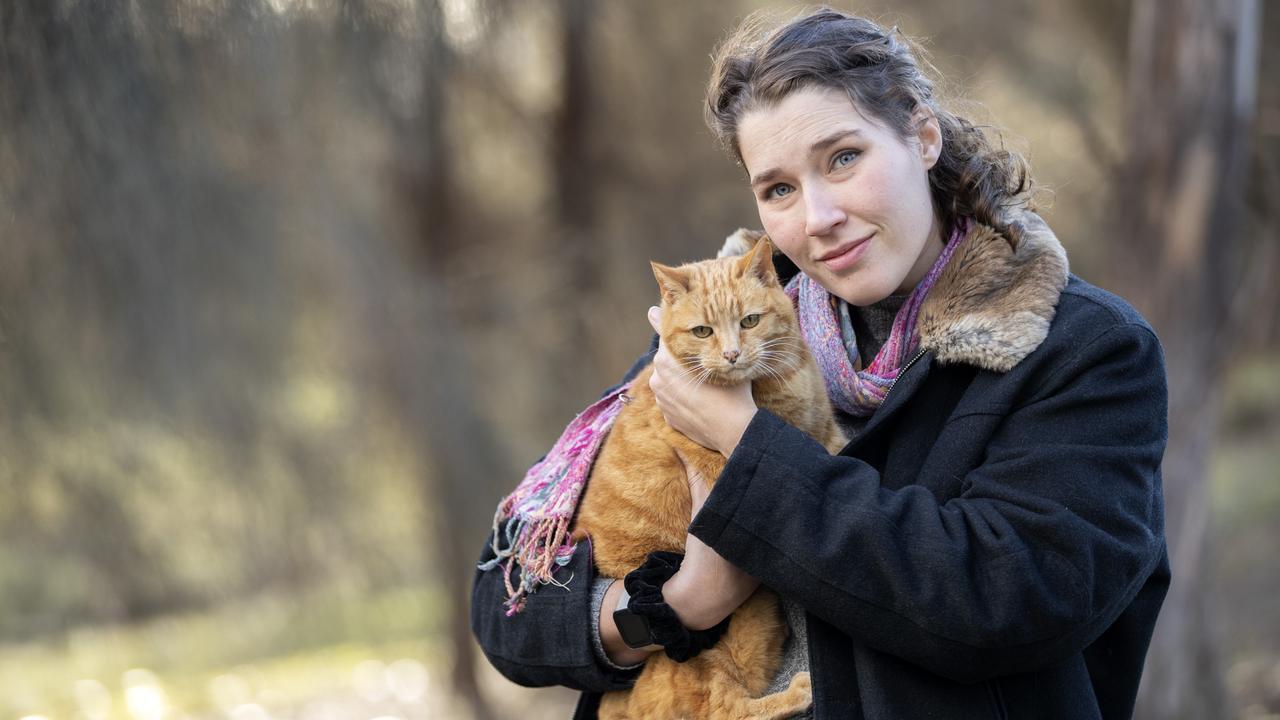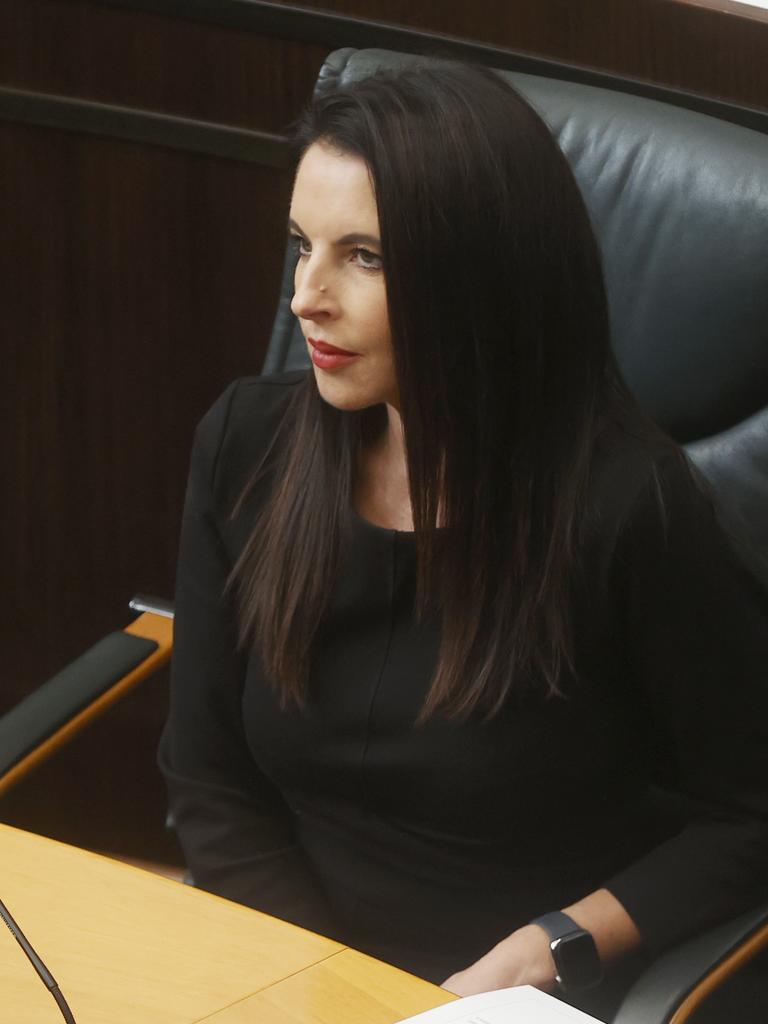Claws out for Tasmania’s environment-trashing tabbies
Hobart cat owner Alex Paton knows her pets are natural born killers, but takes every step to ensure that her furry friends do not impact Tasmania’s fragile environment.
Hobart cat owner Alex Paton knows her pets are natural born killers, but takes every step to ensure her furry friends do not damage Tasmania’s fragile environment.
Away from home, the UTAS invasive species ecologist keeps busy by tackling Tasmania’s feral cat problem, crunching data gathered from an array of 600 cameras set up in bushland across the state.
The PhD candidate will join other experts at the University of Tasmania’s Sandy Bay campus on Wednesday for the Island of Ideas public talk “The Cat Catastrophe: Pet or pest?”
Ms Paton said although Tasmania’s wild-roaming feline population was unquestionably a destructive force, it paled in comparison to the damage caused by pet cats who were not desexed, microchipped, or kept indoors.

“We know that an outdoor domestic cat will kill only a quarter of the animals that a feral cat will each year,” Ms Paton told the Mercury.
“But because there are so many domestic cats in suburban areas, their impact on our native wildlife is actually between 28 to 42 times that of feral cats.
“You might think that your cat isn’t doing much damage, but when you consider your pet, plus your neighbour’s, plus the guy down the road, it’s actually immense.”
Ms Paton said that since European settlement, cats had made themselves at home in every corner of the state, including in the remote Southwest wilderness and on Tasmania’s many offshore islands.
And while Tasmania, unlike the Australian mainland, had not yet lost a native mammal species to the introduced predators, it was vital to reform the state’s cat management regime for the sake of the ecosystem.
“Impacts can come at any time, and we know we’ll be facing big changes in the environment,” Ms Paton said.
“So we need people to urge politicians to push for cat control on our offshore islands, but also for responsible pet ownership.
“I get frustrated, because we could be doing so much more to control our domestic cats.”
A new Tasmanian Cat Management Plan for 2024-2029 is currently being developed by the Department of Natural Resources and Environment Tasmania, in consultation with key stakeholders.

Describing responsible cat ownership as a shared obligation, Minister for Primary Industries and Water, Jane Howlett, said the state government had invested $360,000 each year since 2017 to reduce the species’ impact on the Tasmania’s environment and agricultural sector.
“The Tasmanian Government’s highly successful TassieCat campaign has played a key role in promoting responsible cat ownership and management, resulting in increased public interest, support, and participation in cat-management initiatives,” Minister Howlett said.
In a recent submission to the Government, the Invasive Species Council’s Tasmanian conservation officer, Dr Tiana Pirtle, warned that feral and roaming cats threatened the future of at least 50 of the state’s native animals.
Dr Pirtle called for an updated feral cat strategy in Tasmania; dedicated funding for eradication efforts on the state’s offshore islands; and increased education on responsibly owning domestic pets.
“Improving the management of pet cats in Tasmania would save the lives of millions of native animals around our towns and cities every year,” Dr Pirtle said.
“Currently, local councils can create 24/7 curfews for pet cats, but without community education, funding for enforcement, and consistent statewide rules, this tool is not being used effectively.”
In 2019, Kingborough Council introduced Tasmanian-first by-laws, preventing households on Bruny Island households from keeping more than two cats.
To protect the island’s unique native wildlife, residents are also required to have their cats registered, desexed, and microchipped, and prevent their pets from straying onto neighbouring properties.
Ten Lives Cat Centre chief executive, Noel Hunt, said owner education was vital in reducing the increasing number of cats being collected by his team.
And Mr Hunt said the 70-year-old organisation was now just as concerned for the Tasmanian environment as it was about feline welfare.
“It’s pretty simple, we love cats but they have to be in the right place, and being in the bush killing wildlife isn’t the right place,” he said.
“We take in all the unwanted cats, kittens, and litters.
“There’s a whole bunch of reasons why that might happen, including the lack of availability of rental accommodation that we’ve seen in Tasmania.
“And a lot of people don’t realise that even a four-month old kitten can get pregnant, so we promote early desexing at eight weeks old.”
Mr Hunt said cat management in Tasmania had progressed significantly over the last decade, with local and state governments becoming actively engaged on the issue.
“We are being more progressive and innovative with our education programs, and while we are moving in the right direction, there is still plenty more to do,” he said.
“But we’re having a crack, and getting things done.”





